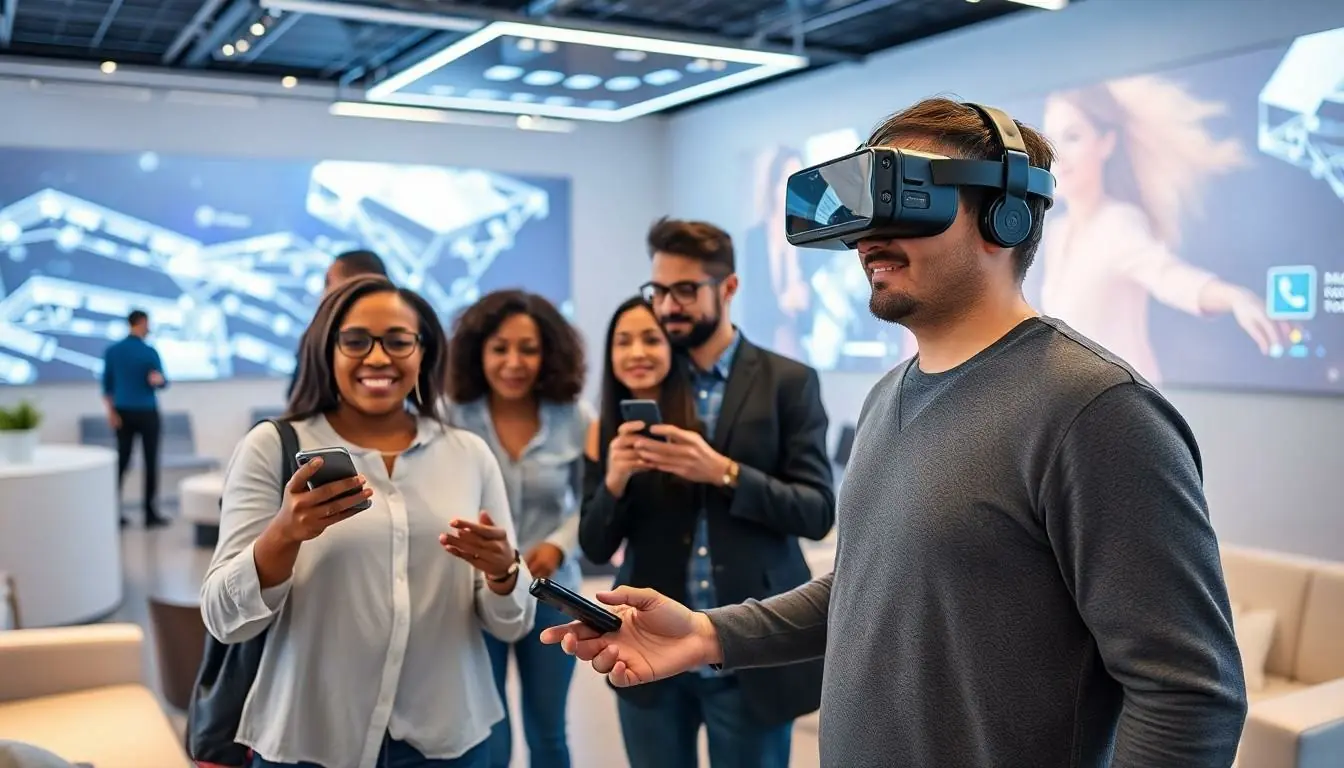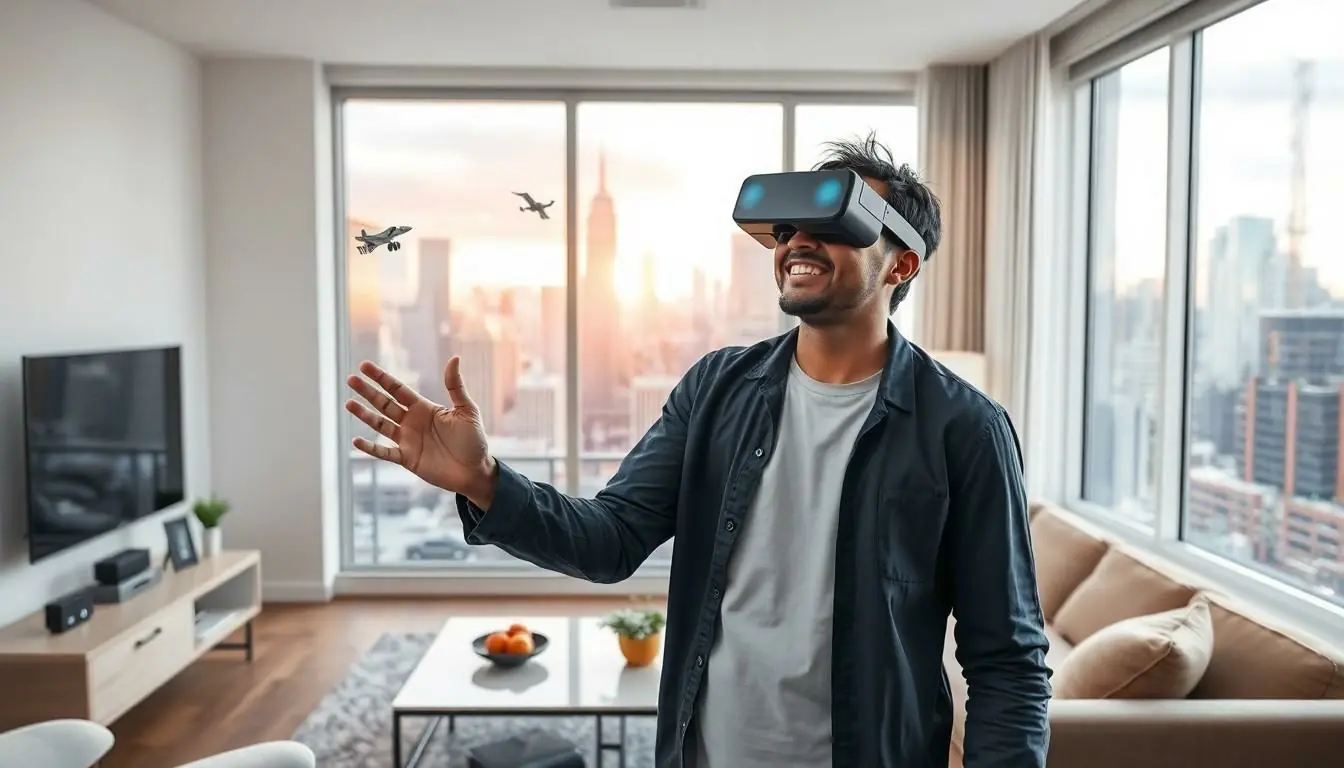In a world where virtual and reality collide, AR setups are the magical portals that make it all happen. Imagine transforming your living room into a bustling city or a serene forest with just a flick of your wrist. It’s not just tech; it’s a ticket to adventures that defy imagination and gravity.
Table of Contents
ToggleUnderstanding AR Setups
AR setups blend digital content with the physical environment, creating immersive experiences. These setups leverage advanced technology to transform user interactions with their surroundings.
Definition of AR Setups
AR setups refer to systems that overlay digital information onto the real world. These systems can include devices like smartphones, tablets, or AR glasses. By utilizing spatial mapping and computer vision technology, AR setups allow users to engage with three-dimensional objects in real time. Popular examples include games, educational tools, and design applications that enhance user experiences.
Importance of AR Setups
AR setups significantly influence various sectors, including education, gaming, and retail. They improve learning by offering interactive simulations that bring concepts to life. Gaming experiences seem richer and more engaging through realistic virtual environments. In retail, AR setups enhance product visualization, allowing customers to virtually place items in their spaces before making a purchase. These applications highlight the potential for AR to revolutionize how individuals interact with information and environments.
Types of AR Setups

AR setups enhance user experiences in various contexts. Users engage with different types of setups tailored for specific applications.
Mobile AR Setups
Mobile AR setups utilize smartphones and tablets to deliver augmented experiences. Devices like the iPhone or Android smartphones integrate AR technology easily. Users engage with apps that overlay digital content onto real-world views using the camera. Popular applications include games like Pokémon Go, where players interact with virtual characters in actual locations. Retail apps allow customers to visualize furniture in their homes before purchasing, enhancing decision-making. Overall, mobile AR transforms everyday activities, blending digital interactions with physical surroundings effectively.
Head-Mounted Displays (HMDs)
Head-mounted displays provide immersive augmented reality experiences directly in the user’s field of vision. HMDs like Microsoft HoloLens and Magic Leap One utilize advanced optics and sensors. Users benefit from a hands-free experience while interacting with digital projections. These setups find applications in fields like healthcare, where medical professionals can visualize patient data during procedures. AR in training environments allows users to simulate complex tasks without real-world constraints. HMDs create engaging and interactive experiences, pushing the boundaries of how augmented reality integrates into daily life.
Components of AR Setups
AR setups comprise essential hardware and software components that contribute to the immersive experience. Each element plays a critical role in delivering augmented reality experiences.
Hardware Requirements
AR setups require specific hardware to function effectively. Devices such as smartphones, tablets, and head-mounted displays (HMDs) serve as primary tools. Smartphones leverage cameras and sensors to capture the physical environment and display digital overlays, while tablets often provide larger screens for enhanced interactivity. HMDs, like Microsoft HoloLens and Magic Leap One, utilize advanced optics and spatial sensors for an immersive experience. Additionally, quality processors and high-resolution displays enhance the clarity and responsiveness of AR content. These hardware elements collectively enable seamless integration of digital content into the real world, enriching user interaction.
Software Platforms
Software platforms drive AR experiences by managing digital content and interaction. Popular AR development frameworks, such as ARKit and ARCore, offer tools for building applications on iOS and Android devices. These platforms facilitate tracking and environmental understanding, essential for overlaying digital elements accurately. Unity and Vuforia also provide extensive support for 3D modeling and animation, allowing developers to create engaging environments. Moreover, applications designed for AR include gaming experiences, educational tools, and retail visualizers. The right software ensures that users experience engaging and coherent augmented reality interactions.
Applications of AR Setups
AR setups transform various industries by enhancing interactions and experiences. Both education and retail sectors prominently illustrate the benefits of this technology.
AR in Education
AR technologies significantly enhance student engagement and comprehension. Students interact with 3D models during science lessons, making concepts easier to grasp. Classrooms utilize applications like Google Expeditions to take students on virtual field trips, providing immersive learning experiences. Educators leverage AR to create interactive simulations, encouraging hands-on learning. Visual aids enriched with AR foster collaboration among students, enhancing teamwork and communication skills. This combination of engagement and interaction results in improved retention rates and deeper understanding of complex subjects. Analytics confirm that using AR in education leads to a 40% increase in learning retention.
AR in Retail
Retail experiences benefit greatly from AR setups, allowing customers to preview products before purchase. Shoppers utilize AR apps to visualize how furniture fits in their homes, eliminating uncertainties about size and style. Dressing rooms equipped with AR mirrors enable consumers to try on clothing virtually, streamlining the shopping process. Retailers create interactive displays that engage customers, enhancing in-store experiences. These innovative shopping methods boost customer satisfaction and reduce return rates. Market studies indicate that AR can increase conversion rates by up to 30%, illustrating its power to attract and retain customers effectively.
AR setups are reshaping how people experience their surroundings by merging the digital and physical worlds. They provide innovative solutions across various industries that enhance engagement and improve interactions. Whether it’s through immersive educational tools or virtual retail experiences, the potential of AR technology continues to grow.
As users explore these setups, they unlock new possibilities that push the boundaries of creativity and functionality. The ongoing advancements in hardware and software promise even more exciting developments on the horizon. Embracing AR technology today means stepping into a future filled with endless opportunities for exploration and innovation.

